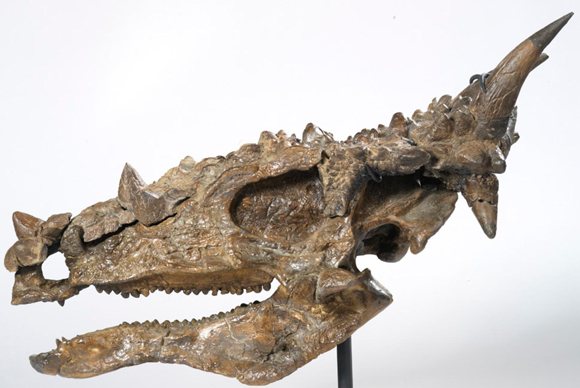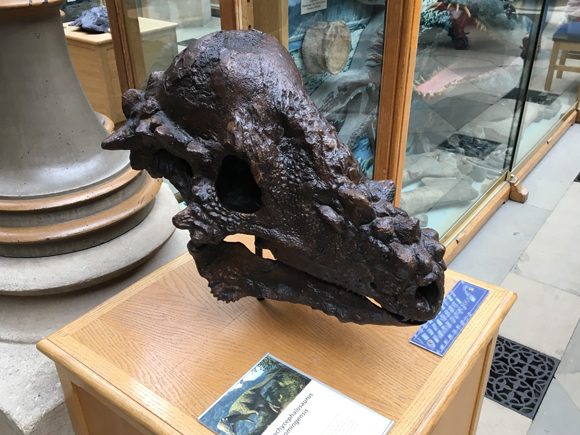Everything Dinosaur team members have been asked to provide some scientific information on the “Styx Demon”, the pachycephalosaur known as Stygimoloch. The profile of this animal was raised recently due to its appearance in the last “Jurassic World – Fallen Kingdom” film to be released and with the introduction of a Stygimoloch model in the Papo “Les Dinosaures” range.

Picture credit: Everything Dinosaur
The picture (above) shows the Papo Stygimoloch model.
To view the range of Papo dinosaur figures: Papo Prehistoric Animal Models.
Preparing Stygimoloch Information for a Dinosaur Exhibit
A paper presented at the 2007 annual meeting of the Society of Vertebrate Paleontology suggested that the spiky Stygimoloch was not a valid species of dinosaur, but its fossils represented juveniles of the already described and much larger, bone-headed dinosaur Pachycephalosaurus. With the validity of this genus in question, this makes preparing scientific information for a dinosaur exhibit featuring Stygimoloch a bit of a challenge for our dedicated team members.

Summarising the Story of Stygimoloch
In 1973, scientists from the University of California Berkeley, whilst exploring Hell Creek Formation exposures in McCone County, Montana, found a single, robust skull fragment with the remains of three distinct, prominent horns projecting out of the back of it.
Although classified as a bone from a pachycephalosaur, no further work on the bone was carried out until palaeontologists Hans-Dieter Sues and Peter Galton published a comprehensive review of North American pachycephalosaur fossils in 1983. They named Stygimoloch (S. spinifer), based on this unusual skull bone and other fragmentary material that had once been thought to represent part of the neck frill from a Triceratops.

Picture credit: Everyhting Dinosaur
Rising to the Challenge
Our team members are not ones to shy away from a challenge. As well as providing information on Stygimoloch for the exhibition, they also prepared some additional information featuring Pachycephalosaurus wyomingensis so that visitors could learn more about how perceptions regarding Hell Creek Formation pachycephalosaurs have changed.
Visit the Everything Dinosaur: Everything Dinosaur.






Leave A Comment